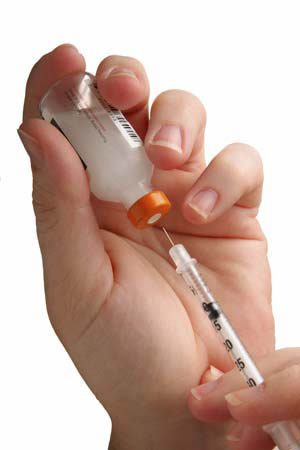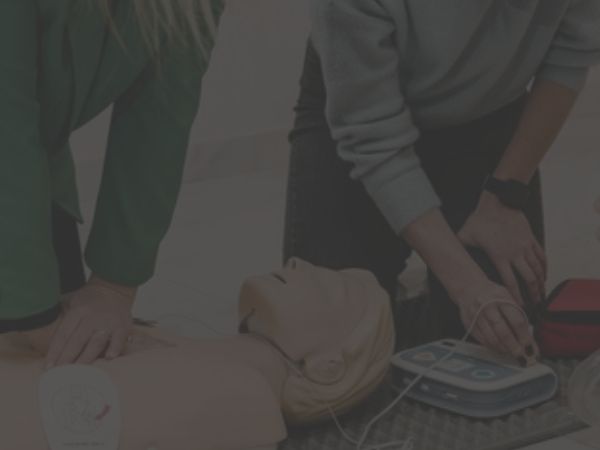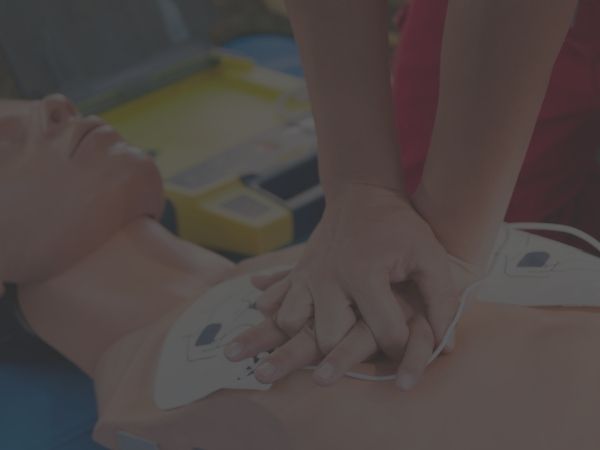Your cart is currently empty!
Measles Outbreak Concerns Renew Interest in BLS Certification Online
More than 43 confirmed cases of measles have been diagnosed in Washington and Oregon this year, reports CBSNews.com. Although the virus was officially listed as eradicated in the U.S. in 2000, philosophical and religious exemptions to vaccination have given the virus an opportunity to return. In fact, Washington Governor Jay Inslee declared a state of emergency in January due to the outbreak. Anyone that never received vaccination and was in the same vicinity as those with a confirmed diagnosis may be at risk for infection, placing a higher burden on the health care industry..
 Spokane, Washington
Spokane, Washington- Seattle, Washington
- Portland, Oregon
- Salt Lake City, Utah
- Provo, Utah
- Phoenix, Arizona
- Detroit, Michigan
- Troy, Michigan
- Warren, Michigan
- Kansas City, Missouri
- Fort Worth, Texas
- Plano, Texas
- Houston, Texas
- Austin, Texas
Health care professionals need to be aware of the risks, how to recognize measles, update their life-saving skills credentials, including CPR and BLS Certification online, and follow a few tips to reduce the spread of the virus
Resurgence of Measles Is a Nationwide Issue
The resurgence of measles might seem like a problem isolated to the key hotspots for current outbreaks across the country. However, the risk of measles extends to areas where vaccination rates are lower. For instance, states allowing non-medical exemption from vaccination, such as Texas, are facing areas where non-vaccination rates are higher. Unfortunately, those that do not yet display symptoms may pass the virus to others in the same area. Since the virus is airborne, the virus can spread quickly. More importantly, a sole case could spread faster in areas where vaccination rates are lower. According to KVUE, the top areas with lower vaccination rates include:
Symptoms and Complications of Measles
Health care professionals living and working in any low-vaccination areas needs to understand how to recognize the signs of measles. According to the Mayo Clinic, the signs and symptoms of measles appear between 10 and 14 days after exposure. They include:
- Dry cough
- Runny nose
- Sore throat
- Inflammation of the eyes, also known as conjunctivitis
- Tiny white spots appearing on the inside of the cheek
- A large rash, resembling blotches blending together
- Rapid onset of high fever, ranging from 104 to 105.8°F
Transmission of the virus occurs through airborne droplets. While the entire period of illness may seem severe, the virus is only contagious for the four days leading up to and following the appearance of the rash. The virus is extremely hardy, capable of remaining active and contagious on surfaces where the virus lands after a cough or sneeze for up to eight hours. In addition, non-vaccinated people have a 90-percent chance of becoming infected following exposure to an individual with an active infection, regardless of age.
Measles and Complications
Measles impact on mortality risk derives from its potential complications. The most common complication is a persistent ear infection. However, additional major complications may occur, including:
- Bronchitis, croup or laryngitis. The inflammation of the inner walls of the bronchi may contribute to a worsening cough and even difficulty breathing.
- Another common complication of measles is pneumonia. The gravest danger lies in those with compromised immune systems and the risk of developing an “especially dangerous variety” of pneumonia that increases mortality rates.
- The rarest complication is encephalitis, swelling of the brain, which affects approximately 0.1 percent of those with measles. Unfortunately, this complication may occur during the period of active infection or months later.
- Pregnant women may experience additional complications, including low-birth rate and premature labor.
The most important complication to take away from this list is pneumonia, which may accompany an increased risk for respiratory and/or cardiac arrest.
Pneumonia Complications May Lead to Higher Risk of Cardiac Arrest
People suffering from pneumonia have a higher risk of respiratory distress. Changes in the heart rhythm, such as an arrhythmia, may contribute to cardiac arrest, but additional factors may lead to stress on the heart. For example, shortness of breath may lead to hypoxia, one of the reversible causes of arrest. Similarly, the increased risk of pneumonia paired with the likelihood of children suffering from measles exacerbates the problem.
Remember children with a pulse below 60 beats per minute require the initiation of chest compressions. Diminished lung capacity resulting from pneumonia increases the likelihood of a child showing signs of bradycardia. As a result, likelihood of entering pulseless electrical activity (PEA) or asystole also increases.
Why Renewing BLS Certification Online Could Reduce Measles Mortality Rates
Measles mortality is the result of severe complications, as listed above. These complications may lead to long-term hospitalization and permanent injury to neural and body tissues. Furthermore, any incidence of cardiac or respiratory arrest arising from measles-induced pneumonia or infection contributes to a higher risk of subsequent arrest. Thus, health care professionals need to have the skill set necessary to perform high-quality care when arrest occurs. In other words, renewing your ACLS and BLS Certification online may be the defining factor in survival and positive treatment outcomes following infection. In addition, completing a BLS training course helps health care professionals in the following ways.
Immediate Activation of the BLS Algorithm Is Key to Survival for Those in Distress
Recognizing someone in distress is the first step to increasing chances of survival. Those with a child with measles may seek medical help, but infected adults lacking vaccination may write symptoms off as the signs of an allergic reaction. Unfortunately, this means people may wait until the complications become evident before seeking treatment, increasing risk of arrest.
Higher Hospitalization Rates Due to Measles Warrant Increased Vigilance
In areas with a current measles outbreak, as well as in areas of low-vaccination rates, the incidence of hospitalization for measles will rise. Since the balance between respiratory arrest and measles is delicate, health care professionals will need to maintain increased vigilance for the signs of cardiac arrest, including shortness of breath, wheezing and loss of consciousness.
Knowing When to Start Chest Compressions for Arrhythmias, Even When a Pulse Is Present
Another aspect of BLS training that will impact measles treatment is knowing when to start chest compressions. Although the rate of PEA is lower among adults, it may still occur. Health care professionals should always check for a pulse physically, and if a pulse cannot be felt within 10 seconds, begin CPR and BLS.
Providing Rescue Breaths and Using a Bag Mask May Reduce Spread of Measles
Measles is a virus spread through the air, so administering mouth-to-mouth rescue breaths or even using a simple mask may be inefficient for preventing the spread of the pathogen. Therefore, the burden of identifying measles symptoms early falls to health care professionals in direct contact with an infected person, especially when administering CPR and BLS.
Reiteration of the Importance of Maintaining Vaccines for Health Care Professionals
Health care professionals may live in states allowing exemptions from routine vaccinations. However, health care facilities have the authority to require all employees to receive and maintain vaccinations. At the same time, some facilities may allow employees to forgo vaccination when taking certain precautions. This is comparable to hospitals implementing a no-vaccination, wear-a-mask policy during flu season.
As part of a BLS course, health care professionals will review infection protocols while performing care, including using appropriate personal protective equipment (PPE) and hand washing.
Additional Steps for Health Care Professionals to Reduce Spread of Measles
Beyond renewing credentials, health care professionals should follow these additional tips to reduce the spread of measles in their facilities:
1. Follow Proper Isolation Precautions
The first step is simple; follow appropriate isolation precautions. Since those with compromised immune systems have a higher risk of severe measles complications, caring for people with the virus may require much more than routine droplet precautions. Progression of infection or other health problems may lead to the use of other isolation precautions, including contact precautions, neutropenic precautions and more.
2. Update Your Vaccines and Those of Your Family Members
Updating your vaccinations is another way to reduce the spread of measles. While health care professionals may know whether they received a measles vaccine in childhood, it is possible that they did not receive a vaccine. This is especially true in states where non-medical exemptions are available.
Health care professionals should review their shot records to determine proper vaccination. They should also review the shot records of their children and family members living in the same home. This will further reduce the risk of transmitting the virus through contact when arriving at home.
3. Disrobe Work Uniforms Away From Susceptible Children, Including Non-Vaccinated and Infants Under Age One
Speaking of the potential for transmission, measles may remain contagious on surfaces for hours after droplets settle. As a result, health care professionals treating those with measles may have the virus on their clothing. Any exposed surface in providing care could act as a mode of transmission.
To reduce the risk further, health care professionals should remove work uniforms before entering areas where children are present.
For example, they may disrobe inside of a garage before taking potentially infectious clothing into the home. Even if children in the home are vaccinated, they could carry the pathogen to other places, such as schools.
While the virus only survives for eight hours on surfaces, it is reasonable to consider this precaution as some health care professionals work overnight. This shortens the window of passing pathogens to children in the morning while getting ready for school. Unfortunately, non-vaccinated children in the school could become infected. It takes a series of steps, but it is up to health care professionals to take the initiative and stop the spread wherever possible.
4. Know Whether Your Area Is Affected by an Outbreak
Another key to reducing the spread is about knowing the vaccination and outbreak rates for your area. CDC.gov publishes a weekly update showing national, state and city outbreaks and cases of measles reported. Most importantly, consider the “Black Box” messages listed on the top right of the page, which shows key travel warnings and concerns for the current week.
5. Stay Informed of Facility-Specific Guidelines or Policies for Caring for Those Carrying the Virus
Individual facilities may implement specific protocols or guidelines for treating those with measles. This is especially true in pediatric facilities where risk of exposure to unvaccinated infants may be higher. Know the policies for your facilities, and follow them appropriately.
6. Revisit the Importance of Vaccinations With Extended Family Members and Friends, If Appropriate
A final tip in reducing the spread of measles goes back to maintaining vaccination. However, take things a step further by encouraging extended family members and friends to vaccinate their children. You may encounter pushback. In these cases, share your knowledge about the potential risks and complications of forgoing vaccination. You cannot change all minds, but you can help with education.
Help Stop the Spread of Measles With Recent, Updated Training
Although the current measles outbreaks in Washington and Oregon reflect a growing concern over non-vaccination rates in states allowing for an exemption from vaccination, do not let the debate distract you. Instead of focusing on the politics over whether vaccination should be mandated by law, health care professionals should hone their skills to prepare for the possibility of additional outbreaks and know the respiratory and cardiac risks associated with the virus.
Is your hospital or facility located in a region facing a measles outbreak? Share your experiences and this article to social media now. Also, remember to enroll in your life-saving course today.










Leave a Reply